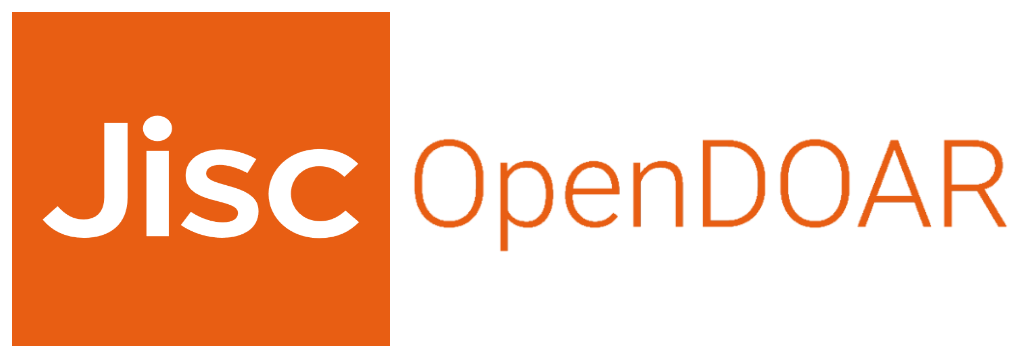Mostrar el registro sencillo del ítem
Evaluación de la capacidad antifúngica de tres péptidos sintéticos antimicrobianos contra especies del género Candida de importancia en salud pública
| dc.contributor.advisor | Muñoz, Julián Esteban | |
| dc.contributor.advisor | Arévalo, Gabriela | |
| dc.contributor.author | Torres Beltrán, Richar Duván | |
| dc.date.accessioned | 2024-05-23T16:21:28Z | |
| dc.date.available | 2024-05-23T16:21:28Z | |
| dc.date.issued | 2022-05 | |
| dc.identifier.uri | https://repositorio.universidadmayor.edu.co/handle/unicolmayor/6910 | |
| dc.description.abstract | La candidiasis es una infección oportunista frecuente en pacientes hospitalizados y/o inmunodeprimidos, alcanzando tasas de mortalidad de 46% aproximadamente. La creciente resistencia farmacológica de Candida spp, y la aparición del patógeno emergente Candida auris, han convertido la candidiasis en un problema de salud pública. Se han investigado diferentes tipos de péptidos antimicrobianos como alternativas terapéuticas para controlar la candidiasis de manera efectiva y segura. El objetivo de este trabajo fue evaluar la actividad antifúngica in vitro de tres péptidos antimicrobianos (PAMs) sintéticos (35409, 1609 y 29009) contra Candida auris, Candida albicans, Candida glabrata, Candida parapsilosis, Candida krusei y Candida tropicalis, especies con importancia clínica mundial. La concentración inhibitoria mínima (CMI) de los péptidos contra Candida spp., se determinó mediante el método de microdilución en placa y se encontró que los 3 péptidos inhibieron el crecimiento de las levaduras, siendo el 1609 el que exhibió mejor actividad. El efecto de los PAM sobre la formación de biopelículas en las especies de C. auris y C. albicans también se evaluó a través del ensayo XTT, encontrándose actividad inhibitoria de los 3 péptidos sobre ambas especies. Adicionalmente, los daños estructurales en C. auris y C. albicans causados por la acción de los péptidos fueron evaluados por microscopía electrónica de transmisión (TEM) y finalmente, se evaluó la citotoxicidad in vitro de los péptidos contra fibroblastos murinos L929. Se evidenció alteraciones morfológicas inducidas por los péptidos, tanto en membrana como a nivel intracelular sobre C. albicans y C. auris, así como total inocuidad de los PAM con la línea celular murina L929 después de 24 horas de tratamiento. De esta manera, se concluye que los péptidos ensayados son potenciales alternativas terapéuticas con especial interés por el péptido 1609, contra las especies de Candida más importantes de Colombia y el mundo. | spa |
| dc.description.abstract | Candidiasis is a common opportunistic infection in hospitalized and/or immunosuppressed patients, reaching mortality rates of approximately 46%. The increasing pharmacological resistance of Candida spp, and the appearance of the emerging pathogen Candida auris, have turned candidiasis into a public health problem. Different types of antimicrobial peptides have been investigated as therapeutic alternatives to control candidiasis effectively and safely. The aim of this work was to evaluate the in vitro antifungal activity of three synthetic antimicrobial peptides (AMPs) (35409, 1609 and 29009) against Candida auris, Candida albicans, Candida glabrata, Candida parapsilosis, Candida krusei and Candida tropicalis, species with worldwide clinical importance. The minimum inhibitory concentration (MIC) of the peptides against Candida spp. was determined by the plate microdilution method and it was found that the 3 peptides inhibited the growth of the yeasts, being 1609 the one that exhibited the best activity. The effect of PAMs on biofilm formation in C. auris and C. albicans species was also evaluated through the XTT assay, finding inhibitory activity of the 3 peptides on both species. Additionally, the structural damages in C. auris and C. albicans caused by the action of the peptides were evaluated by transmission electron microscopy (TEM) and finally, the in vitro cytotoxicity of the peptides against L929 murine fibroblasts was evaluated. Morphological alterations induced by the peptides were evidenced, both in the membrane and at the intracellular level on C. albicans and C. auris, as well as total innocuousness of the PAM with the murine cell line L929 after 24 hours of treatment. In this way, it is concluded that the tested peptides are potential therapeutic alternatives with special interest for peptide 1609, against the most important Candida species in Colombia and the world. | eng |
| dc.description.tableofcontents | Contenido 1. Introducción 11 2. Objetivos 14 2.1. Objetivo general 14 2.2. Objetivos específicos 14 3. Marco teórico 15 3.1. Generalidades de Candida spp. 15 3.2. Candida auris 18 3.3. Péptidos antimicrobianos (PAMs) 20 3.3.1. PAMs de origen natural 21 3.3.2. PAMs de origen sintético 22 4. Materiales y métodos 23 4.1. Cepas de Candida auris y otras especies de Candida de importancia clínica. 23 4.2. Consideraciones éticas 23 4.3. Síntesis y purificación de los péptidos antimicrobianos 24 4.4. Determinación de la concentración inhibitoria mínima (CMI) de los péptidos 1609, 29009 y 35409 24 4.5. Evaluación de la capacidad inhibitoria de biopelícula de los péptidos 1609, 29009 y 35409 25 4.6. Efecto de los péptidos sobre la morfología de las levaduras mediante microscopía electrónica de transmisión (TEM) 26 4.7. Determinación de la actividad citotóxica in vitro de los péptidos 35409, 1609 y 29009. 26 5. Resultados 28 5.1. Los péptidos 1609, 29009 y 35409 inhibieron el crecimiento de las seis especies de Candida evaluadas 28 5.2. La formación de biopelícula en C. albicans y C. auris fue inhibida por los péptidos 1609, 29009 y 35409 33 5.3. La morfología de las levaduras C. albicans y C. auris es afectada por los péptidos 1609, 29009 y 35409 35 5.4. Los péptidos 1609, 29009 y 35409 no tienen actividad citotóxica sobre la línea celular murina L929 37 6. Discusión 39 7. Conclusiones 48 8. Recomendaciones 49 9. Material Suplementario 50 9.1. S1: Ensayo Actividad Inhibitoria de los PAMs 1609, 29009 y 35409 en Candida spp. 50 9.2. S2: Ensayo Actividad Inhibitoria sobre la formación de Biopelícula de los PAMs 1609, 29009 y 35409 en Candida spp. 55 Referencias 57 | spa |
| dc.format.extent | 64p. | spa |
| dc.format.mimetype | application/pdf | spa |
| dc.language.iso | spa | spa |
| dc.publisher | Universidad Colegio Mayor de Cundinamarca | spa |
| dc.rights | Derechos Reservados - Universidad Colegio Mayor de Cundinamarca, 2024 | spa |
| dc.rights.uri | https://creativecommons.org/licenses/by-nc/4.0/ | spa |
| dc.title | Evaluación de la capacidad antifúngica de tres péptidos sintéticos antimicrobianos contra especies del género Candida de importancia en salud pública | spa |
| dc.type | Trabajo de grado - Maestría | spa |
| dc.contributor.corporatename | Universidad Colegio Mayor de Cundinamarca | spa |
| dc.contributor.researchgroup | Estudios en microbiología traslacional y enfermedades emergentes MICROS | spa |
| dc.description.degreelevel | Maestría | spa |
| dc.description.degreename | Magíster en Microbiología | spa |
| dc.description.researcharea | Microbiología médica | spa |
| dc.publisher.faculty | Facultad de Ciencias de la Salud | spa |
| dc.publisher.place | Bogotá D.C., Colombia | spa |
| dc.publisher.program | Maestría en Microbiología | spa |
| dc.relation.references | Perlin DS, Rautemaa-Richardson R, Alastruey-Izquierdo A. The global problem of antifungal resistance: prevalence, mechanisms, and management [Internet]. Vol. 17, The Lancet Infectious Diseases. Lancet Publishing Group; 2017 [cited 2021 Mar 23]. p. e383–92. Available from: https://linkinghub.elsevier.com/retrieve/pii/S147330991730316X | spa |
| dc.relation.references | Srivastava V, Singla RK, Dubey AK. Emerging Virulence, Drug Resistance and Future Anti-fungal Drugs for Candida Pathogens. Current Topics in Medicinal Chemistry. 2018 May 29;18(9):759–78. | spa |
| dc.relation.references | Lee Y, Puumala E, Robbins N, Cowen LE. Antifungal Drug Resistance: Molecular Mechanisms in Candida albicans and beyond. Chemical Reviews [Internet]. 2021 Mar 24 [cited 2022 Mar 21];121(6):3390–411. Available from: https://pubs.acs.org/doi/abs/10.1021/acs.chemrev.0c00199 | spa |
| dc.relation.references | Motoa G, Muñoz JS, Oñate J, Pallares CJ, Hernández C, Villegas MV. Epidemiology of Candida isolates from Intensive Care Units in Colombia from 2010 to 2013. Revista Iberoamericana de Micología. 2017 Jan 1;34(1):17–22. | spa |
| dc.relation.references | Maldonado NA, Cano LE, de Bedout C, Arbeláez CA, Roncancio G, Tabares ÁM, et al. Association of clinical and demographic factors in invasive candidiasis caused by fluconazole-resistant Candida species: a study in 15 hospitals, Medellín, Colombia 2010–2011. Diagnostic Microbiology and Infectious Disease. 2014 Jun 1;79(2):280–6. | spa |
| dc.relation.references | Zuluaga Rodríguez A, de Bedout Gómez C, Agudelo Restrepo CA, Hurtado Parra H, Arango Arteaga M, Restrepo Moreno Á, et al. Sensibilidad a fluconazol y voriconazol de especies de Candida aisladas de pacientes provenientes de unidades de cuidados intensivos en Medellín, Colombia (2001–2007). Revista Iberoamericana de Micología. 2010 Jul 1;27(3):125–9. | spa |
| dc.relation.references | Cannon RD, Lamping E, Holmes AR, Niimi K, Tanabe K, Niimi M, et al. Candida albicans drug resistance - Another way to cope with stress [Internet]. Vol. 153, Microbiology. Microbiology (Reading); 2007 [cited 2021 Mar 24]. p. 3211–7. Available from: https://pubmed.ncbi.nlm.nih.gov/17906120/ | spa |
| dc.relation.references | Osei Sekyere J. Candida auris: A systematic review and meta-analysis of current updates on an emerging multidrug-resistant pathogen. Microbiologyopen. 2018 Aug 1;7(4). | spa |
| dc.relation.references | Instituto Nacional de Salud. Circular 0025 [Internet]. Bogotá D. C.; 2017 Jul [cited 2021 Mar 24]. Available from: https://www.famisanar.com.co/wp-content/uploads/2019/10/Infecciones-Invasivas_-0025-DE-2017-INS-CANDIDA.pdf | spa |
| dc.relation.references | Instituo Nacional de Salud. Alerta por emergencia global de infecciones invasivas causadas por la levadura multirresistente, Candida auris [Internet]. Bogotá D. C.; 2016 Sep [cited 2021 Mar 24]. Available from: https://www.gov.uk/government/collections/candida-auris | spa |
| dc.relation.references | Carvajal-Valencia SK, Lizarazo D, Duarte C, Escandon P. Identification of Candida auris isolates recovered through laboratory surveillance in Colombia: A challenge for diagnostic. Infectio [Internet]. 2020 Jun 10 [cited 2021 Mar 24];24(4):224–8. Available from: http://dx.doi.org/10.22354/in.v24i4.880 | spa |
| dc.relation.references | Zuluaga A. Candida auris: estrategias y retos para prevenir un brote. Biomédica [Internet]. 2020 Mar [cited 2021 Mar 24];40(1):5–10. Available from: http://www.scielo.org.co/pdf/bio/v40n1/0120-4157-bio-40-01-5.pdf | spa |
| dc.relation.references | Bechinger B, Gorr SU. Antimicrobial Peptides: Mechanisms of Action and Resistance [Internet]. Vol. 96, Journal of Dental Research. SAGE Publications Inc.; 2017 [cited 2021 Mar 24]. p. 254–60. Available from: https://pubmed.ncbi.nlm.nih.gov/27872334/ | spa |
| dc.relation.references | Barreto-Santamaría A, Curtidor H, Arévalo-Pinzón G, Herrera C, Suárez D, Pérez WH, et al. A new synthetic peptide having two target of antibacterial action in E. coli ML35. Frontiers in Microbiology [Internet]. 2016 [cited 2021 Mar 24];7(DEC). Available from: /pmc/articles/PMC5167725/ | spa |
| dc.relation.references | Alvarez-Moreno CA, Cortes JA, Denning DW. Burden of fungal infections in Colombia. Journal of Fungi [Internet]. 2018 Jun 1 [cited 2021 Mar 31];4(2). Available from: /pmc/articles/PMC6023354/ | spa |
| dc.relation.references | de Bedout C, Gómez BL. Candida y candidiasis invasora: un reto continuo para su diagnóstico temprano Candida and candidiasis: the challenge continues for an early diagnosis. Infectio [Internet]. 2010 [cited 2021 Mar 31];14:159–71. Available from: http://www.scielo.org.co/pdf/inf/v14s2/v14s2a08.pdf | spa |
| dc.relation.references | Pappas PG, Lionakis MS, Arendrup MC, Ostrosky-Zeichner L, Kullberg BJ. Invasive candidiasis. Nature Reviews Disease Primers [Internet]. 2018 May 11 [cited 2021 Mar 31];4. Available from: https://pubmed.ncbi.nlm.nih.gov/29749387/ | spa |
| dc.relation.references | Wisplinghoff H, Bischoff T, Tallent SM, Seifert H, Wenzel RP, Edmond MB. Nosocomial bloodstream infections in US hospitals: Analysis of 24,179 cases from a prospective nationwide surveillance study. Clinical Infectious Diseases [Internet]. 2004 Aug 1 [cited 2021 Mar 31];39(3):309–17. Available from: https://pubmed.ncbi.nlm.nih.gov/15306996/ | spa |
| dc.relation.references | Mejia-Chew C, O’Halloran JA, Olsen MA, Stwalley D, Kronen R, Lin C, et al. Effect of infectious disease consultation on mortality and treatment of patients with candida bloodstream infections: a retrospective, cohort study. The Lancet Infectious Diseases. 2019 Dec 1;19(12):1336–44 | spa |
| dc.relation.references | Lazo V, Hernández G, Méndez R. Candidiasis sistémica en pacientes críticos, factores predictores de riesgo. Horizonte Médico (Lima) [Internet]. 2018 Dec 31 [cited 2021 Mar 31];18(1):75–85. Available from: http://www.scielo.org.pe/scielo.php?script=sci_arttext&pid=S1727-558X2018000100011&lng=es&nrm=iso&tlng=es | spa |
| dc.relation.references | Cortés JA, Ruiz JF, Melgarejo-Moreno LN, Lemos E v., Cortés JA, Ruiz JF, et al. Candidemia en Colombia. Biomédica [Internet]. 2020 [cited 2022 Apr 26];40(1):195–207. Available from: http://www.scielo.org.co/scielo.php?script=sci_arttext&pid=S0120-41572020000100195&lng=en&nrm=iso&tlng=es | spa |
| dc.relation.references | Nucci M, Queiroz-Telles F, Alvarado-Matute T, Tiraboschi IN, Cortes J, Zurita J, et al. Epidemiology of Candidemia in Latin America: A Laboratory-Based Survey. PLoS ONE [Internet]. 2013 Mar 19 [cited 2021 Apr 1];8(3). Available from: https://pubmed.ncbi.nlm.nih.gov/23527176/ | spa |
| dc.relation.references | Quindós G. Epidemiology of candidaemia and invasive candidiasis. A changing face. Vol. 31, Revista Iberoamericana de Micologia. Elsevier Doyma; 2014. p. 42–8. | spa |
| dc.relation.references | Benjamin DK, Poole C, Steinbach WJ, Rowen JL, Walsh TJ. Neonatal candidemia and end-organ damage: A critical appraisal of the literature using meta-analytic techniques. Pediatrics [Internet]. 2003 Sep 1 [cited 2021 Apr 1];112(3 I):634–40. Available from: https://pediatrics.aappublications.org/content/112/3/634 | spa |
| dc.relation.references | Walsh TJ, Katragkou A, Chen T, Salvatore CM, Roilides E. Invasive candidiasis in infants and children: Recent advances in epidemiology, diagnosis, and treatment. Journal of Fungi [Internet]. 2019 Mar 1 [cited 2021 Apr 1];5(1):11. Available from: /pmc/articles/PMC6463055/ | spa |
| dc.relation.references | Piarroux R, Grenouillet F, Balvay P, Tran V, Blasco G, Millon L, et al. Assessment of preemptive treatment to prevent severe candidiasis in critically ill surgical patients. Critical Care Medicine [Internet]. 2004 Dec [cited 2021 Apr 1];32(12):2443–9. Available from: https://pubmed.ncbi.nlm.nih.gov/15599149/ | spa |
| dc.relation.references | Aguado JM, Ruiz-Camps I, Muñoz P, Mensa J, Almirante B, Vázquez L, et al. Guidelines for the treatment of invasive candidiasis and other yeasts. Spanish Society of Infectious Diseases and Clinical Microbiology (SEIMC). 2010 Update. Enfermedades Infecciosas y Microbiologia Clinica [Internet]. 2011 [cited 2021 Apr 1];29(5):345–61. Available from: https://pubmed.ncbi.nlm.nih.gov/21459489/ | spa |
| dc.relation.references | Parkins MD, Sabuda DM, Elsayed S, Laupland KB. Adequacy of empirical antifungal therapy and effect on outcome among patients with invasive Candida species infections. Journal of Antimicrobial Chemotherapy [Internet]. 2007 Sep [cited 2021 Apr 1];60(3):613–8. Available from: https://pubmed.ncbi.nlm.nih.gov/17576697/ | spa |
| dc.relation.references | Pappas PG, Kauffman CA, Andes D, Benjamin, Jr. DK, Calandra TF, Edwards, Jr. JE, et al. Guías de práctica clínica para el manejo de la candidiasis: actualización del 2009, de la Infectious Diseases Society of America. Clinical Infectious Diseases [Internet]. 2009 Mar 1 [cited 2021 Apr 1];48(5):T1–35. Available from: https://academic.oup.com/cid/article/48/5/503/384590 | spa |
| dc.relation.references | Yapar N, Pullukcu H, Avkan-Oguz V, Sayin-Kutlu S, Ertugrul B, Sacar S, et al. Evaluation of species distribution and risk factors of candidemia: A multicenter case-control study. Medical Mycology [Internet]. 2010 Jan [cited 2021 Apr 1];49(1):26–31. Available from: https://pubmed.ncbi.nlm.nih.gov/20662635/ | spa |
| dc.relation.references | Kim MN, Shin JH, Sung H, Lee K, Kim EC, Ryoo N, et al. Candida haemulonii and closely related species at 5 university hospitals in Korea: Identification, antifungal susceptibility, and clinical features. Clinical Infectious Diseases [Internet]. 2009 Mar 15 [cited 2021 Apr 1];48(6). Available from: https://pubmed.ncbi.nlm.nih.gov/19193113/ | spa |
| dc.relation.references | Jeffery-Smith A, Taori SK, Schelenz S, Jeffery K, Johnson EM, Borman A, et al. Candida auris: A review of the literature. Clinical Microbiology Reviews [Internet]. 2018 Jan 1 [cited 2021 Apr 1];31(1). Available from: https://cmr.asm.org/content/31/1/e00029-17 | spa |
| dc.relation.references | Lee WG, Shin JH, Uh Y, Kang MG, Kim SH, Park KH, et al. First three reported cases of nosocomial fungemia caused by Candida auris. Journal of Clinical Microbiology [Internet]. 2011 Sep [cited 2021 Apr 1];49(9):3139–42. Available from: /pmc/articles/PMC3165631/ | spa |
| dc.relation.references | Escandón P, Chow NA, Caceres DH, Gade L, Berkow EL, Armstrong P, et al. Molecular epidemiology of candida auris in Colombia Reveals a Highly Related, Countrywide Colonization with Regional Patterns in Amphotericin B Resistance. Clinical Infectious Diseases [Internet]. 2019 Jan 1 [cited 2021 Mar 24];68(1):15–21. Available from: https://pubmed.ncbi.nlm.nih.gov/29788045/ | spa |
| dc.relation.references | Carvajal-Valencia SK, Lizarazo D, Duarte C, Escandon P. Identificación de aislamientos de Candida auris recuperados a través de la vigilancia por laboratorio en Colombia: un reto para el diagnóstico. Infectio [Internet]. 2020 Jun 10 [cited 2022 Apr 26];24(4):224–8. Available from: http://revistainfectio.org/index.php/infectio/article/view/880 | spa |
| dc.relation.references | U.S. Department of Health & Human Services. Invasive Candidiasis Statistics [Internet]. 2019 [cited 2021 Nov 7]. Available from: https://www.cdc.gov/fungal/diseases/candidiasis/invasive/statistics.html | spa |
| dc.relation.references | Vallabhaneni S, Kallen A, Tsay S, Chow N, Welsh R, Kerins J, et al. Investigation of the First Seven Reported Cases of Candida auris, a Globally Emerging Invasive, Multidrug-Resistant Fungus—United States, May 2013–August 2016. American Journal of Transplantation [Internet]. 2017 Jan 1 [cited 2021 Apr 1];17(1):296–9. Available from: https://pubmed.ncbi.nlm.nih.gov/28029734/ | spa |
| dc.relation.references | Chowdhary A, Voss A, Meis JF. Multidrug-resistant Candida auris: ‘new kid on the block’ in hospital-associated infections? Journal of Hospital Infection [Internet]. 2016 Nov 1 [cited 2021 Apr 1];94(3):209–12. Available from: https://pubmed.ncbi.nlm.nih.gov/27634564/ | spa |
| dc.relation.references | Flowers SA, Barker KS, Berkow EL, Toner G, Chadwick SG, Gygax SE, et al. Gain-of-function mutations in UPC2 are a frequent cause of ERG11 upregulation in azole-resistant clinical isolates of Candida albicans. Eukaryotic Cell [Internet]. 2012 Oct [cited 2021 Apr 1];11(10):1289–99. Available from: https://pubmed.ncbi.nlm.nih.gov/22923048/ | spa |
| dc.relation.references | Berkow E, Lockhart S. Fluconazole resistance in Candida species: a current perspective. Infection and Drug Resistance [Internet]. 2017 Jul 31 [cited 2021 Apr 1];10:237–45. Available from: https://www.dovepress.com/fluconazole-resistance-in-candida-species-a-current-perspective-peer-reviewed-article-IDR | spa |
| dc.relation.references | Lockhart SR, Etienne KA, Vallabhaneni S, Farooqi J, Chowdhary A, Govender NP, et al. Simultaneous emergence of multidrug-resistant candida auris on 3 continents confirmed by whole-genome sequencing and epidemiological analyses. Clinical Infectious Diseases [Internet]. 2017 Jan 15 [cited 2021 Apr 1];64(2):134–40. Available from: https://pubmed.ncbi.nlm.nih.gov/27988485/ | spa |
| dc.relation.references | Mulder KCL, Lima LA, Miranda VJ, Dias SC, Franco OL. Current scenario of peptide-based drugs: the key roles of cationic antitumor and antiviral peptides. Frontiers in Microbiology [Internet]. 2013 [cited 2021 Mar 30];4. Available from: https://pubmed.ncbi.nlm.nih.gov/24198814/ | spa |
| dc.relation.references | Xiao H, Shao F, Wu M, Ren W, Xiong X, Tan B, et al. The application of antimicrobial peptides as growth and health promoters for swine [Internet]. Vol. 6, Journal of Animal Science and Biotechnology. BioMed Central Ltd.; 2015 [cited 2021 Mar 30]. p. 19. Available from: http://www.jasbsci.com/content/6/1/19 | spa |
| dc.relation.references | Lledó Giralt E, Albericio Palomera F, Jiménez J. Péptidos y la industria farmacéutica. Anales de la Real Sociedad Española Química [Internet]. 2004 [cited 2021 Apr 1];1:10–6. Available from: https://dialnet.unirioja.es/servlet/articulo?codigo=818822 | spa |
| dc.relation.references | Gordon YJ, Romanowski EG, McDermott AM. Mini review: A review of antimicrobial peptides and their therapeutic potential as anti-infective drugs. Current Eye Research [Internet]. 2005 Jul [cited 2021 Apr 1];30(7):505–15. Available from: /pmc/articles/PMC1497874/ | spa |
| dc.relation.references | Domhan C, Uhl P, Meinhardt A, Zimmermann S, Kleist C, Lindner T, et al. A novel tool against multiresistant bacterial pathogens: lipopeptide modification of the natural antimicrobial peptide ranalexin for enhanced antimicrobial activity and improved pharmacokinetics. International Journal of Antimicrobial Agents [Internet]. 2018 Jul 1 [cited 2021 Apr 1];52(1):52–62. Available from: https://pubmed.ncbi.nlm.nih.gov/29649587/ | spa |
| dc.relation.references | Liu B, Zhang W, Gou S, Huang H, Yao J, Yang Z, et al. Intramolecular cyclization of the antimicrobial peptide Polybia-MPI with triazole stapling: influence on stability and bioactivity. Journal of Peptide Science [Internet]. 2017 Nov 1 [cited 2021 Apr 1];23(11):824–32. Available from: https://pubmed.ncbi.nlm.nih.gov/28833783/ | spa |
| dc.relation.references | Steiner H, Hultmark D, Engström Å, Bennich H, Boman HG. Sequence and specificity of two antibacterial proteins involved in insect immunity. Nature [Internet]. 1981 Jul 1 [cited 2021 Apr 1];292(5820):246–8. Available from: https://www.nature.com/articles/292246a0 | spa |
| dc.relation.references | Moore AJ, Beazley WD, Bibby MC, Devine DA. Antimicrobial activity of cecropins. Journal of Antimicrobial Chemotherapy [Internet]. 1996 Jun 1 [cited 2021 Apr 1];37(6):1077–89. Available from: https://academic.oup.com/jac/article-lookup/doi/10.1093/jac/37.6.1077 | spa |
| dc.relation.references | Melino S, Santone C, di Nardo P, Sarkar B. Histatins: Salivaryx peptides with copper(II)- and zinc(II)-binding motifs Perspectives for biomedical applications [Internet]. Vol. 281, FEBS Journal. Blackwell Publishing Ltd; 2014 [cited 2021 Apr 1]. p. 657–72. Available from: https://pubmed.ncbi.nlm.nih.gov/24219363/ | spa |
| dc.relation.references | Mansour SC, de la Fuente-Núñez C, Hancock REW. Peptide IDR-1018: modulating the immune system and targeting bacterial biofilms to treat antibiotic-resistant bacterial infections. Journal of Peptide Science [Internet]. 2015 May 1 [cited 2021 Mar 30];21(5):323–9. Available from: http://doi.wiley.com/10.1002/psc.2708 | spa |
| dc.relation.references | Wang H, LeBert V, Hung CY, Galles K, Saijo S, Lin X, et al. C-Type Lectin Receptors Differentially Induce Th17 Cells and Vaccine Immunity to the Endemic Mycosis of North America. The Journal of Immunology [Internet]. 2014 Feb 1 [cited 2021 Apr 1];192(3):1107–19. Available from: https://pubmed.ncbi.nlm.nih.gov/24391211/ | spa |
| dc.relation.references | Omardien S, Drijfhout JW, van Veen H, Schachtschabel S, Riool M, Hamoen LW, et al. Synthetic antimicrobial peptides delocalize membrane bound proteins thereby inducing a cell envelope stress response. Biochimica et Biophysica Acta - Biomembranes [Internet]. 2018 Nov 1 [cited 2021 Apr 1];1860(11):2416–27. Available from: https://pubmed.ncbi.nlm.nih.gov/29894683/ | spa |
| dc.relation.references | Sang M, Wei H, Zhang J, Wei Z, Wu X, Chen Y, et al. Expression and characterization of the antimicrobial peptide ABP-dHC-cecropin A in the methylotrophic yeast Pichia pastoris. Protein Expression and Purification [Internet]. 2017 Dec 1 [cited 2021 Mar 30];140:44–51. Available from: https://pubmed.ncbi.nlm.nih.gov/28827052/ | spa |
| dc.relation.references | Rossi DC, Muñoz JE, Carvalho DD, Belmonte R, Faintuch B, Borelli P, et al. Therapeutic use of a cationic antimicrobial peptide from the spider Acanthoscurria gomesiana in the control of experimental candidiasis. BMC Microbiol [Internet]. 2012 [cited 2021 Mar 31];12:28. Available from: https://pubmed.ncbi.nlm.nih.gov/22394555/ | spa |
| dc.relation.references | Muñoz JE, Rossi DCP, Ishida K, Spadari CC, Melhem MSC, Garcia DM, et al. Antifungal activity of the biphosphinic cyclopalladate C7a against Candida albicans yeast forms in vitro and in vivo. Frontiers in Microbiology [Internet]. 2017 May 3 [cited 2021 Nov 24];8(MAY). Available from: /pmc/articles/PMC5413578/ | spa |
| dc.relation.references | Pierce CG, Uppuluri P, Tristan AR, Wormley FL, Mowat E, Ramage G, et al. A simple and reproducible 96-well plate-based method for the formation of fungal biofilms and its application to antifungal susceptibility testing. Nature Protocols 2008 3:9 [Internet]. 2008 Aug 28 [cited 2021 Oct 25];3(9):1494–500. Available from: https://www.nature.com/articles/nprot.2008.141 | spa |
| dc.relation.references | Danihelová M, Veverka M, Šturdík E, Jantová S. Antioxidant action and cytotoxicity on HeLa and NIH-3T3 cells of new quercetin derivatives. Interdisciplinary Toxicology [Internet]. 2013 [cited 2022 Mar 30];6(4):209. Available from: /pmc/articles/PMC3945760/ | spa |
| dc.relation.references | Magana M, Pushpanathan M, Santos AL, Leanse L, Fernandez M, Ioannidis A, et al. The value of antimicrobial peptides in the age of resistance. The Lancet Infectious Diseases. 2020 Sep 1;20(9):e216–30. | spa |
| dc.relation.references | Lei J, Sun LC, Huang S, Zhu C, Li P, He J, et al. The antimicrobial peptides and their potential clinical applications. American Journal of Translational Research [Internet]. 2019 [cited 2022 Mar 21];11(7):3919. Available from: /pmc/articles/PMC6684887/ | spa |
| dc.relation.references | Li R, Chen C, Zhu S, Wang X, Yang Y, Shi W, et al. CGA-N9, an antimicrobial peptide derived from chromogranin A: direct cell penetration of and endocytosis by Candida tropicalis. Biochemical Journal [Internet]. 2019 Feb 14 [cited 2022 Mar 21];476(3):483–97. Available from: /biochemj/article/476/3/483/219528/CGA-N9-an-antimicrobial-peptide-derived-from | spa |
| dc.relation.references | de Alteriis E, Maselli V, Falanga A, Galdiero S, di Lella FM, Gesuele R, et al. Efficiency of gold nanoparticles coated with the antimicrobial peptide indolicidin against biofilm formation and development of Candida spp. clinical isolates. Infection and Drug Resistance [Internet]. 2018 [cited 2022 Mar 21];11:915. Available from: /pmc/articles/PMC6037145/ | spa |
| dc.relation.references | Roscetto E, Contursi P, Vollaro A, Fusco S, Notomista E, Catania MR. Antifungal and anti-biofilm activity of the first cryptic antimicrobial peptide from an archaeal protein against Candida spp. clinical isolates. Scientific Reports 2018 8:1 [Internet]. 2018 Dec 4 [cited 2022 Mar 21];8(1):1–11. Available from: https://www.nature.com/articles/s41598-018-35530-0 | spa |
| dc.relation.references | Galdiero E, Salvatore MM, Maione A, Carraturo F, Galdiero S, Falanga A, et al. Impact of the Peptide WMR-K on Dual-Species Biofilm Candida albicans/Klebsiella pneumoniae and on the Untargeted Metabolomic Profile. Pathogens [Internet]. 2021 Feb 1 [cited 2022 Mar 21];10(2):1–19. Available from: https://pubmed.ncbi.nlm.nih.gov/33669279/ | spa |
| dc.relation.references | Jia F, Wang J, Peng J, Zhao P, Kong Z, Wang K, et al. The in vitro, in vivo antifungal activity and the action mode of Jelleine-I against Candida species. Amino Acids 2017 50:2 [Internet]. 2017 Nov 3 [cited 2022 Mar 26];50(2):229–39. Available from: https://link.springer.com/article/10.1007/s00726-017-2507-1 | spa |
| dc.relation.references | Kočendová J, Kočendov K, Kočendová K, Vaňková E, Vaňkov V, Vaňková V, et al. Antifungal activity of analogues of antimicrobial peptides isolated from bee venoms against vulvovaginal Candida spp. FEMS Yeast Research [Internet]. 2019 May 1 [cited 2022 Mar 26];19(3):13. Available from: https://academic.oup.com/femsyr/article/19/3/foz013/5315757 | spa |
| dc.relation.references | do Nascimento Dias J, de Souza Silva C, de Araújo AR, Souza JMT, de Holanda Veloso Júnior PH, Cabral WF, et al. Mechanisms of action of antimicrobial peptides ToAP2 and NDBP-5.7 against Candida albicans planktonic and biofilm cells. Scientific Reports [Internet]. 2020 Dec 1 [cited 2021 May 3];10(1). Available from: /pmc/articles/PMC7316759/ | spa |
| dc.relation.references | Bellavita R, Maione A, Merlino F, Siciliano A, Dardano P, Stefano L de, et al. Antifungal and Antibiofilm Activity of Cyclic Temporin L Peptide Analogues against Albicans and Non-Albicans Candida Species. Pharmaceutics 2022, Vol 14, Page 454 [Internet]. 2022 Feb 21 [cited 2022 Mar 26];14(2):454. Available from: https://www.mdpi.com/1999-4923/14/2/454/htm | spa |
| dc.relation.references | Colombo AL, Dal Mas C, Rossato L, Shimizu T, Oliveira EB, da Silva Junior PI, et al. Effects of the Natural Peptide Crotamine from a South American Rattlesnake on Candida auris, an Emergent Multidrug Antifungal Resistant Human Pathogen. Biomolecules [Internet]. 2019 Jun 1 [cited 2022 Mar 26];9(6). Available from: https://pubmed.ncbi.nlm.nih.gov/31141959/ | spa |
| dc.relation.references | Dartevelle P, Ehlinger C, Zaet A, Boehler C, Rabineau M, Westermann B, et al. D-Cateslytin: a new antifungal agent for the treatment of oral Candida albicans associated infections. Scientific Reports 2018 8:1 [Internet]. 2018 Jun 18 [cited 2022 Apr 4];8(1):1–10. Available from: https://www.nature.com/articles/s41598-018-27417-x | spa |
| dc.relation.references | Ciociola T, Pertinhez TA, de Simone T, Magliani W, Ferrari E, Belletti S, et al. In Vitro and In Vivo Anti- Candida Activity and Structural Analysis of Killer Peptide (KP)-Derivatives. J Fungi (Basel) [Internet]. 2021 Feb 1 [cited 2022 Apr 4];7(2):1–19. Available from: https://pubmed.ncbi.nlm.nih.gov/33578728/ | spa |
| dc.relation.references | Ramamourthy G, Park J, Seo C, Vogel HJ, Park Y. Antifungal and Antibiofilm Activities and the Mechanism of Action of Repeating Lysine-Tryptophan Peptides against Candida albicans. Microorganisms 2020, Vol 8, Page 758 [Internet]. 2020 May 18 [cited 2022 Mar 27];8(5):758. Available from: https://www.mdpi.com/2076-2607/8/5/758/htm | spa |
| dc.relation.references | Cheng R, Xu Q, Hu F, Li H, Yang B, Duan Z, et al. Antifungal activity of MAF-1A peptide against Candida albicans. International Microbiology [Internet]. 2021 May 1 [cited 2022 Apr 4];24(2):233–42. Available from: https://link.springer.com/article/10.1007/s10123-021-00159-z | spa |
| dc.rights.accessrights | info:eu-repo/semantics/closedAccess | spa |
| dc.rights.creativecommons | Atribución-NoComercial 4.0 Internacional (CC BY-NC 4.0) | spa |
| dc.subject.proposal | Candida auris | spa |
| dc.subject.proposal | Candida spp. | spa |
| dc.subject.proposal | Péptidos antimicrobianos | spa |
| dc.subject.proposal | Resistencia | spa |
| dc.subject.proposal | Candidiasis | spa |
| dc.type.coar | http://purl.org/coar/resource_type/c_bdcc | spa |
| dc.type.coarversion | http://purl.org/coar/version/c_970fb48d4fbd8a85 | spa |
| dc.type.content | Text | spa |
| dc.type.driver | info:eu-repo/semantics/masterThesis | spa |
| dc.type.redcol | https://purl.org/redcol/resource_type/TM | spa |
| dc.type.version | info:eu-repo/semantics/publishedVersion | spa |
| dc.rights.coar | http://purl.org/coar/access_right/c_14cb | spa |



















